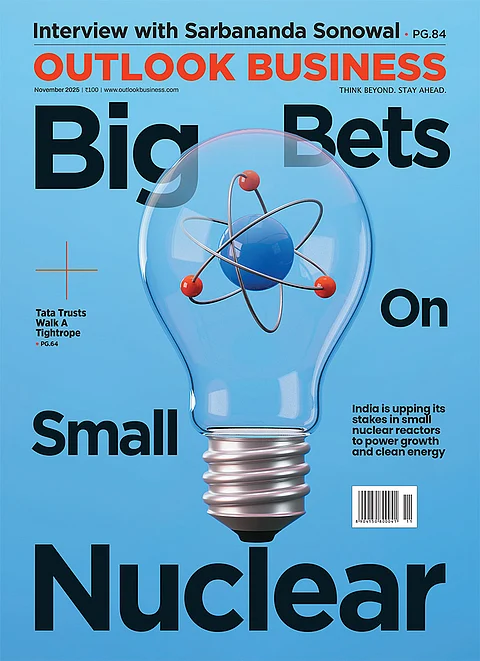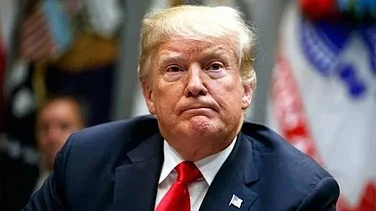
Only 16 of 85 auto PLI firms qualified for incentives by July 2025.
India’s import dependence on batteries, magnets undermines PLI localisation targets.
R&D intensity of Indian automakers lags global peers by up to three times.
Experts warn PLI success needs clarity on tariffs and stronger domestic manufacturing.
Approved in September 2021, the Production Linked Incentive (PLI) scheme for the automotive sector was conceived as a transformative push to boost domestic manufacturing of advanced automotive technology products. The programme was outlined with a budget of ₹25,938 crore over five years from 2023–27 with a focus on zero-emission vehicles such as battery electric vehicles (EVs) and hydrogen fuel cell vehicles.
However, the scheme for automobiles and auto components is sputtering far below expectations. Even after four years, only one-fifth of the participating companies have qualified for incentive payouts under the ₹25,938 crore programme. Business Standard reported that just 16 out of 85 approved firms managed to meet the scheme’s strict domestic value addition (DVA) criteria as of July 31, 2025. Furthermore, only 107 models and components have received clearance among these successful applicants.
This slow pace raises concerns about whether the PLI scheme is on track to achieve its goal of catalysing India’s manufacturing ambitions in the auto space
Promise and Progress
The scheme aimed to promote greater localisation in the auto supply chain while accelerating the shift to clean mobility by providing 8–18% incentives on incremental sales of EVs and high-tech parts.
The plan was ambitious with 20 applicants approved under the Champion Original Equipment Manufacturer Incentive Scheme of the PLI programme and 64 component makers in its initial cohort of approved applicants. It also aligned with India’s goal to increase the share of manufacturing in its GDP to 25% by 2025 to reduce import reliance a target that remains elusive.
“We import auto parts as much as we export. Indian companies do not innovate as much as their Chinese and South Korean counterparts do. Hence the uptake of the PLI scheme has been slow,” says Devasheesh Mathur, assistant professor of strategy and general management at IMI, a premier business school. He stresses that the scheme targets cutting-edge technologies like EVs, hydrogen fuel cells and autonomous systems, which require significant R&D and capital investment and only a few players in the market can manage.
According to a 2024 report on R&D of auto companies by the financial services firm IIFL Securities, global firms outperformed Indian firms for R&D intensity and for the proportion of PhD employees by 3.1 and 3.4 times respectively.
The only Indian company that has been able to remain in the top global 10 companies with higher R&D intensity is Mahindra & Mahindra (M&M) with a 3.3% rate. To put that in context, the R&D intensity of the top nine companies above M&M ranges between 15.2–3.8%. M&M’s PhD employees are at 0%.

Experts point out that R&D investments, already low in India across sectors, have stalled growth in technological advancements in the automotive sector as well. This is expected to worsen in the face of higher uncertainties.
“There are three key uncertainties companies are grappling with—a slowing market, the lack of clarity on tariffs and the broader global economic slowdown. Once there is greater clarity on these fronts we are likely to see renewed interest in PLI in the months ahead,” says V G Ramakrishnan, managing partner at Avanteum Advisors, a strategy and management consultancy.
According to Mayank Jain, partner at Khaitan & Co law firm, expanding production in an uncertain environment is both risky and difficult. Since the PLI scheme is designed to reward higher output, many traditional players have been hesitant to scale up. “Whereas technology and business-ready companies such as Tata and M&M which support innovation and diversification as well as have forayed into electric are at an advantage,” he adds.
A Mint report says the first round of incentive payments only went out in January 2025 largely to two industry giants: M&M and Tata Motors together claimed about ₹246 crore for 2023–24. This figure hints that only well-established players have been able to navigate the scheme's hurdles so far.
The government so far maintains that leading automakers are progressing well and have filed claims collectively and it is optimistic about utilising the scheme's entire corpus by the fourth year in 2025–26. However, the continued struggles among a long tail of other firms, which remain unable to qualify, put that optimism in question.
Jain argues that based on current data the scheme’s utilisation goals may not be fully achieved but regulatory and strategic interventions on selection criteria can ensure incentives reach the intended impact.
Trouble Mounts
At the heart of the PLI scheme there are stringent localisation requirements. To earn any incentive companies must achieve at least 50% DVA in the eligible vehicles or components. Ramakrishnan acknowledges the need for such stringency since taxpayer funds are at stake. Yet this benchmark has become a stumbling block.
Compounding the localisation challenge is India’s continued import dependency for critical EV components. Two of India's biggest EV makers, Tata Motors and M&M, also depend almost entirely on batteries from China's BYD and Gotion, companies that specialise in batteries and EVs.
China’s recent strategic curbs on seven rare earth magnets forced domestic electric two-wheeler makers to consider importing the entire motor from Beijing instead of assembling it in India. Through this setup it is impossible to meet the 50% DVA criteria. The situation grew serious enough that the auto industry has urged the government to exclude electric motors from DVA calculations.
According to a source involved in the industry—government discussions on motor imports from China said the sector had asked whether bringing in fully built units would still qualify for concessions under the scheme. “In a crisis of this nature, the industry expects government support,” the source noted.
Prime Minister Narendra Modi set an ambitious goal for EVs to make up 30% of India's total passenger car sales by 2030 compared to 2.5% in 2024. It aims to meet both his decarbonisation goals and clean up the air over India's cities, which are some of the world's most polluted. Meeting this vision will require not just faster EV adoption but also a robust domestic manufacturing base to avoid swapping oil dependency for reliance on imported batteries and magnets. The PLI scheme is central to this but its slow progress underlines that incentives alone cannot succeed without supportive infrastructure and realistic targets.




























